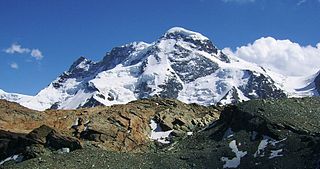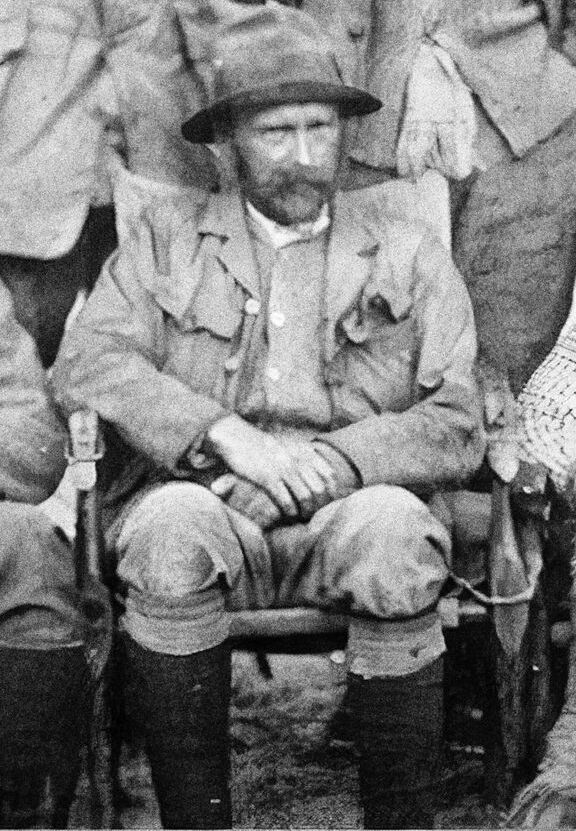The Seven Summits are the highest mountains of each of the seven traditional continents. Climbing to the summit of all of them was first done on 30 April 1985 by Richard Bass. Once considered a mountaineering challenge, in January 2023, Climbing said "Today, the Seven Summits are a relatively common—almost cliché—tour of each continent's highest peak", and that the real challenge was the Explorers Grand Slam, the Seven Summits with the North and South poles.

Reinhold Andreas Messner is an Italian mountaineer, explorer, and author from South Tyrol. He made the first solo ascent of Mount Everest and, along with Peter Habeler, the first ascent of Everest without supplemental oxygen. He was the first climber to ascend all fourteen peaks over 8,000 metres (26,000 ft) above sea level without oxygen. Messner was the first to cross Antarctica and Greenland with neither snowmobiles nor dog sleds. He also crossed the Gobi Desert alone. He is widely considered one of the greatest mountaineers of all time.

The Breithorn is a mountain range of the Pennine Alps with its highest peak of the same name, located on the border between Switzerland and Italy. It lies on the main chain of the Alps, approximately halfway between the Matterhorn and Monte Rosa and east of the Theodul Pass. Most of the massif is glaciated and includes several subsidiary peaks, all located east of the main summit: the Central Breithorn, the western Breithorn Twin, the Gendarm and the Roccia Nera. The main summit is sometimes distinguished by the name Western Breithorn. The nearest settlements are Zermatt (Valais) and St-Jacques.
Jan Carstenszoon or more commonly Jan Carstensz was a 17th-century Dutch explorer. In 1623, Carstenszoon was commissioned by the Dutch East India Company to lead an expedition to the southern coast of New Guinea and beyond, to follow up the reports of land sighted further south in the 1606 voyages of Willem Janszoon in the Duyfken.

Jean Jacques Dozy was a Dutch geologist.
Patrick Allan Morrow, is a Canadian photographer and mountain climber. In 1986 he was the first person to climb the Seven Summits in the Carstensz-Version.

Puncak Trikora, until 1963 Wilhelmina Peak, is a 4,730 or 4,750-metre-high (15,584 ft) mountain in the Highland Papua province of Indonesia on New Guinea. It lies in the eastern part of the Sudirman (Nassau) Range of the Maoke Mountains.

The Seven Second Summits are the second-highest mountains of each of the seven continents. All of these mountain peaks are separate peaks rather than a sub-peak of the continents' high point. The Seven Second Summits are considered a harder challenge than the traditional Seven Summits.

Alexander Frederick Richmond "Sandy" Wollaston was an English medical doctor, ornithologist, botanist, climber and explorer. After qualifying as a surgeon in 1903, Wollaston decided to spend his life on exploration and natural history, travelling extensively; he wrote books about his travels and work, and was elected a Fellow of the Royal Geographical Society in 1907. He took up an offer from John Maynard Keynes as a tutor at Cambridge, Wollaston and was shot dead by Douglas Potts, a deranged undergraduate student, in Cambridge.

Christian Stangl is an Austrian alpine style mountaineer and mountain guide. He has become known as Skyrunner by numerous exceptionally fast ascents of high mountains. His major success was in 2013, when he became the first person to ascend the three highest mountains on all seven continents, the so-called Triple Seven Summits.

Sergey Anatolyevich Kofanov is a Russian mountaineer.

Antonie Hendrikus Colijn was a Dutch amateur mountaineer who in 1936 led the Carstensz Expedition, being the first to climb the Carstenszgebergte in New Guinea.

Puncak Mandala or Mandala Peak is a mountain located in Highland Papua, Indonesia. At 4,760 metres (15,617 ft), it is the highest point of the Jayawijaya (Orange) Range and included in Seven Second Summits. Following Mount Carstensz 350 km to the west, Mandala is the second highest freestanding mountain of Oceania, Australasia, New Guinea and Indonesia.

Puncak Jaya or Carstensz Pyramid, Mount Jayawijaya or Mount Carstensz on the island of New Guinea, with an elevation of 4,884 m (16,024 ft), is the highest mountain peak of an island on Earth. The mountain is located in the Sudirman Range of the highlands of Mimika Regency, Central Papua, Indonesia.

The so-called Top of the Mont Blanc is a collection piece on display in the Oval Room of Teylers Museum. The specimen was cut off from the highest findable piece of exposed rock of the Rocher de la Tournette, 4,677 metres (15,344 ft) high on the snow covered summit ridge of the Mont Blanc on 3 August 1787, during one of the first climbs of the mountain by the Swiss scientific pioneer Horace Bénédict de Saussure.

Ngga Pulu is a summit on the north rim of Mount Carstensz in the western part of the island of New Guinea rising 4,862 metres (15,951 ft). Trigonometric measurements showed that Ngga Pulu was the highest mountain of New Guinea and also the highest summit of the Australia-New Guinea continent. The elevation of Ngga Pulu in 1936 was about 4,907 m (16,099 ft), and it was the highest and most prominent peak between the Himalaya and the Andes. However, due to glacial melting, Ngga Pulu lost a lot of elevation in the 20th century.

Sumantri Peak is a sharp mountain in the western Sudirman Range (Papua). It rises 4,870 metres (15,978 ft).
Samina Khayal Baig is a Pakistani high-altitude mountaineer who in 2013 climbed Mount Everest, all Seven Summits by 2014, and K2 in 2022. She is the first Pakistani woman to climb Everest, K2 and the Seven Summits. She climbed Mt. Everest at the age of 21.

Adventure Consultants, formerly Hall and Ball Adventure Consultants, is a New Zealand-based adventure company that brings trekking and climbing groups to various locations. Founded by Rob Hall and Gary Ball in 1991, it is known for its pioneering role in the commercialisation of Mount Everest and the 1996 Mount Everest climb during which eight people died, including Hall, a guide, and two Adventure Consultant clients.














